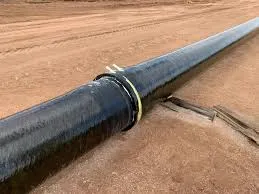
-
 Afrikaans
Afrikaans -
 Albanian
Albanian -
 Amharic
Amharic -
 Arabic
Arabic -
 Armenian
Armenian -
 Azerbaijani
Azerbaijani -
 Basque
Basque -
 Belarusian
Belarusian -
 Bengali
Bengali -
 Bosnian
Bosnian -
 Bulgarian
Bulgarian -
 Catalan
Catalan -
 Cebuano
Cebuano -
 China
China -
 China (Taiwan)
China (Taiwan) -
 Corsican
Corsican -
 Croatian
Croatian -
 Czech
Czech -
 Danish
Danish -
 Dutch
Dutch -
 English
English -
 Esperanto
Esperanto -
 Estonian
Estonian -
 Finnish
Finnish -
 French
French -
 Frisian
Frisian -
 Galician
Galician -
 Georgian
Georgian -
 German
German -
 Greek
Greek -
 Gujarati
Gujarati -
 Haitian Creole
Haitian Creole -
 hausa
hausa -
 hawaiian
hawaiian -
 Hebrew
Hebrew -
 Hindi
Hindi -
 Miao
Miao -
 Hungarian
Hungarian -
 Icelandic
Icelandic -
 igbo
igbo -
 Indonesian
Indonesian -
 irish
irish -
 Italian
Italian -
 Japanese
Japanese -
 Javanese
Javanese -
 Kannada
Kannada -
 kazakh
kazakh -
 Khmer
Khmer -
 Rwandese
Rwandese -
 Korean
Korean -
 Kurdish
Kurdish -
 Kyrgyz
Kyrgyz -
 Lao
Lao -
 Latin
Latin -
 Latvian
Latvian -
 Lithuanian
Lithuanian -
 Luxembourgish
Luxembourgish -
 Macedonian
Macedonian -
 Malgashi
Malgashi -
 Malay
Malay -
 Malayalam
Malayalam -
 Maltese
Maltese -
 Maori
Maori -
 Marathi
Marathi -
 Mongolian
Mongolian -
 Myanmar
Myanmar -
 Nepali
Nepali -
 Norwegian
Norwegian -
 Norwegian
Norwegian -
 Occitan
Occitan -
 Pashto
Pashto -
 Persian
Persian -
 Polish
Polish -
 Portuguese
Portuguese -
 Punjabi
Punjabi -
 Romanian
Romanian -
 Russian
Russian -
 Samoan
Samoan -
 Scottish Gaelic
Scottish Gaelic -
 Serbian
Serbian -
 Sesotho
Sesotho -
 Shona
Shona -
 Sindhi
Sindhi -
 Sinhala
Sinhala -
 Slovak
Slovak -
 Slovenian
Slovenian -
 Somali
Somali -
 Spanish
Spanish -
 Sundanese
Sundanese -
 Swahili
Swahili -
 Swedish
Swedish -
 Tagalog
Tagalog -
 Tajik
Tajik -
 Tamil
Tamil -
 Tatar
Tatar -
 Telugu
Telugu -
 Thai
Thai -
 Turkish
Turkish -
 Turkmen
Turkmen -
 Ukrainian
Ukrainian -
 Urdu
Urdu -
 Uighur
Uighur -
 Uzbek
Uzbek -
 Vietnamese
Vietnamese -
 Welsh
Welsh -
 Bantu
Bantu -
 Yiddish
Yiddish -
 Yoruba
Yoruba -
 Zulu
Zulu
frp products for steel smelting plant
FRP Products for Steel Smelting Plants
Fiber Reinforced Plastic (FRP) products have emerged as essential materials for modern steel smelting plants
. Given the challenging environments and rigorous requirements of these facilities, FRP offers unique advantages that traditional materials simply cannot match. This article explores the benefits and applications of FRP products in the steel smelting industry.Steel smelting plants are characterized by high temperatures, corrosive atmospheres, and heavy mechanical stress. In such settings, the materials used must withstand extreme conditions while maintaining structural integrity. FRP, composed of a polymer matrix reinforced with fibers (typically glass or carbon), is a lightweight yet remarkably strong solution. Its inherently high tensile strength and corrosion resistance make it an ideal choice for various applications within steel smelting operations.
One of the most critical applications of FRP in steel smelting plants is in the construction of tanks and vessels that store chemicals used in the smelting process. Traditional materials like steel or concrete can rust, corrode, or degrade over time when exposed to harsh chemicals and high temperatures. FRP tanks, on the other hand, exhibit excellent chemical resistance and can be designed to withstand both thermal expansion and contraction without losing their integrity. This longevity minimizes maintenance costs and reduces the risk of operational delays due to equipment failure.
frp products for steel smelting plant

Additionally, FRP products are widely used for piping systems in steel smelting plants. The transportation of molten materials and corrosive chemicals requires piping that is not only strong but also resistant to chemical attacks. FRP pipes are lightweight and can be easily installed, which can significantly reduce labor costs. Their flexibility allows for creative design solutions in navigating complex plant layouts, making FRP piping an attractive alternative to traditional metal pipes.
Furthermore, FRP is gaining popularity in the manufacturing of grating and flooring systems. Steel smelting plants are prone to spills and leaks, which pose safety risks to workers. FRP grating is slip-resistant, reducing the likelihood of accidents in such hazardous environments. Beyond safety, FRP flooring is also easy to clean and maintain, ensuring a hygienic working space.
Finally, FRP products contribute to the sustainable operations of steel smelting plants. Their lightweight nature leads to lower energy consumption during transport and installation. Moreover, as they are made from polymers that can be recycled, they help minimize environmental impact, aligning with modern industrial practices focused on sustainability.
In conclusion, the integration of FRP products into steel smelting plants presents a multitude of benefits. From improving safety and efficiency to enhancing durability and sustainability, FRP stands out as a valuable material that can help steel manufacturers meet the increasing demands of the industry. As technology and production methods advance, it will be exciting to see how FRP continues to evolve and reshape the operational landscape of steel smelting facilities around the world.









